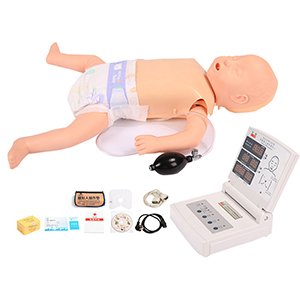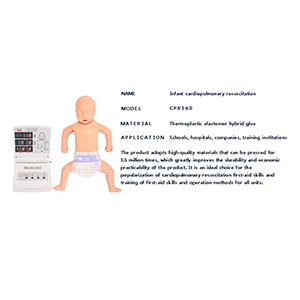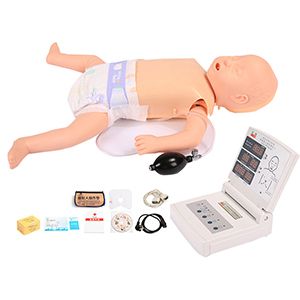Introduction: The Need for Infant CPR Training
Asphyxia is one of the leading causes of neonatal death and long-term neurological damage worldwide and according to the World Health Organization (WHO), approximately 1 million newborns die from asphyxia each year . High-quality infant cardiopulmonary resuscitation (CPR) training is key to improving newborn survival, and infant CPR simulators are becoming an indispensable tool in the medical education system. It improves the accuracy and effectiveness of first aid training through intelligent, data-based and highly simulated interactive design, and has a far-reaching impact on the development of future medical education.

1. High simulation training improves skill mastery
Traditional CPR teaching relies on theoretical knowledge and limited practical training, and it is difficult for students to accurately grasp the key operations such as the depth of compression, frequency, artificial respiration and ventilation. Infant CPR Simulator has a simulated human anatomy, elastic tissue feedback and dynamic physiological response system , allowing participants to form muscle memory in practice, thereby reducing clinical errors. Studies have shown that Students with high simulation training can improve their mastery of CPR skills by more than 35% compared with traditional teaching , effectively improving the clinical coping ability of future medical personnel.
2. Data-driven personalized teaching
Modern infant CPR simulators with built-in sensors and intelligent feedback systems are able to monitor and record the trainee's operational data in real time, such as compression depth, frequency, consistency and ventilation , and provide personalized improvement recommendations through data analysis. According to the American Heart Association (AHA), feedback training based on data analysis can improve the performance of students by 40% over traditional teaching methods , significantly reducing the error rate in first aid. In the future, this kind of intelligent data-driven teaching will become the core trend of medical education.

3. Improve the success rate of first aid and reduce neonatal mortality
Clinical data show that effective first aid within the golden 4 minutes of CPR can increase newborn survival by 50%. However, in reality, the lack of quality practical training for many medical personnel has resulted in a poor success rate of CPR. The application of infant CPR simulates human beings, so that students can practice repeatedly in the most realistic physiological environment, optimize the first aid process, and make faster and more accurate judgments in the real scene. This not only improves the success rate of first aid, but also effectively reduces medical accidents caused by improper operation .
Conclusion: Leading the future transformation of medical education
As an innovative product of intelligent medical education, infant CPR simulator has gradually changed the traditional medical training model. Through the integration of the highest simulation experience, data feedback, AI technology and distance education , it not only improves the professional skills of the participants, but also promotes the popularization of standardized first aid training worldwide . In the future, with the continuous upgrading of technology, infant CPR simulators will play a greater role in the fields of medical education, hospital training and public first aid promotion, making important contributions to reducing neonatal mortality and improving the overall quality of medical care.

